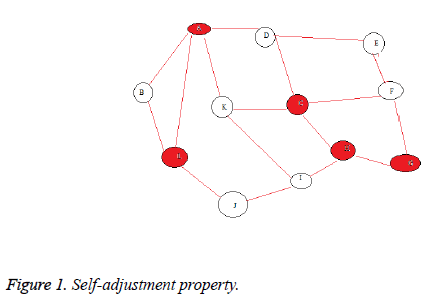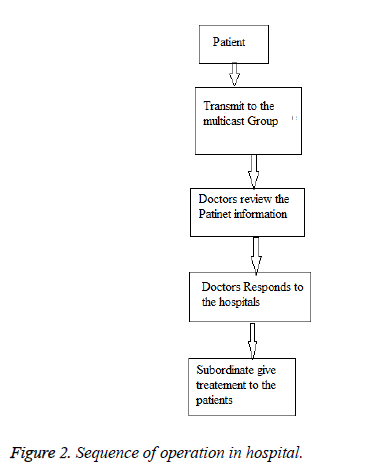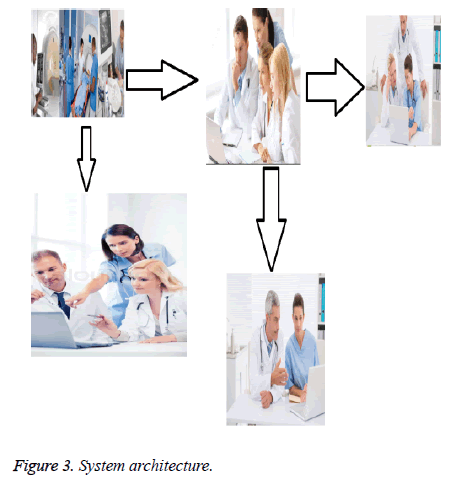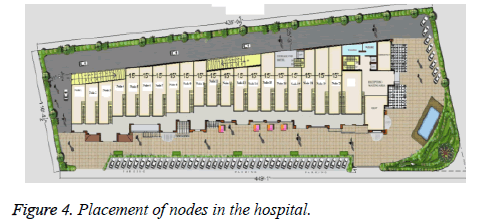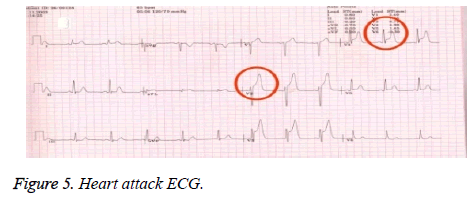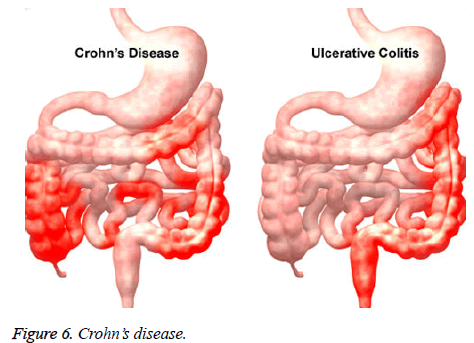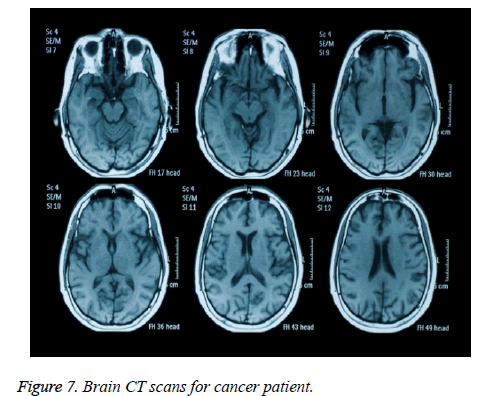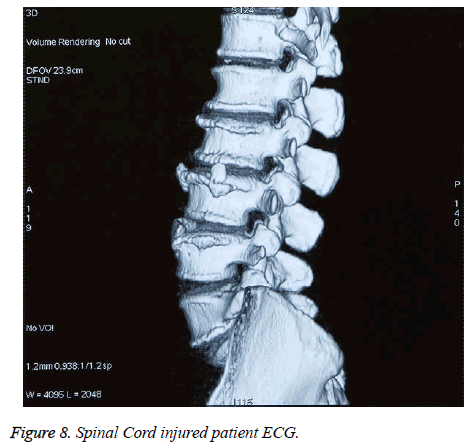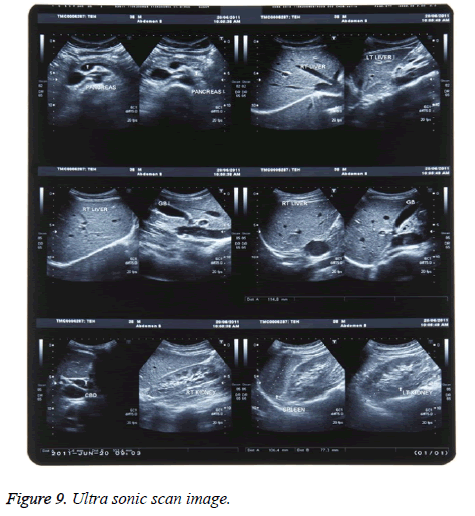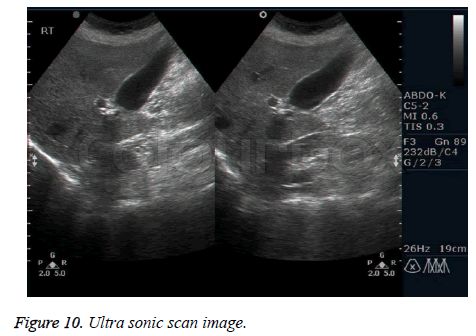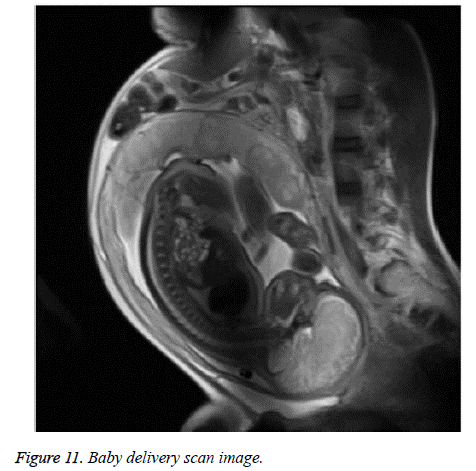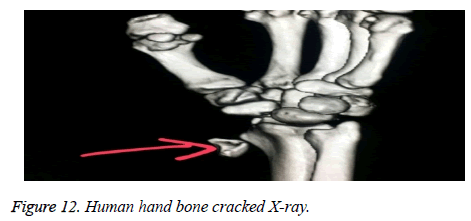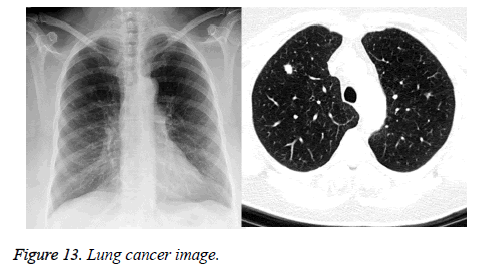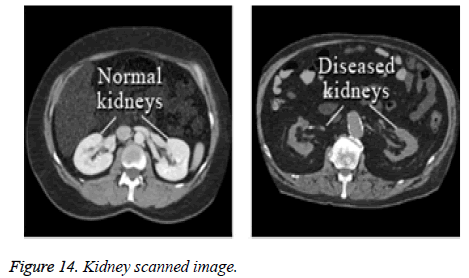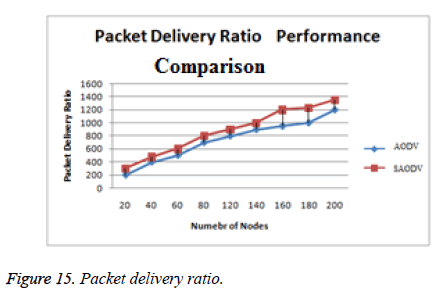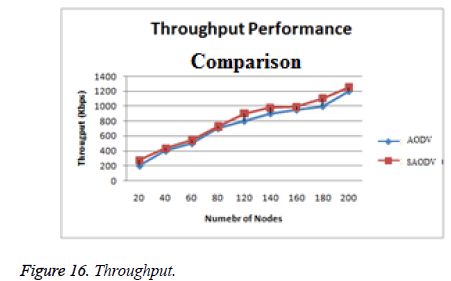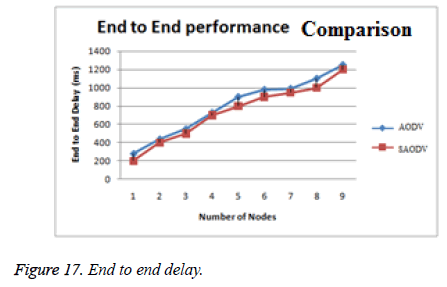Research Article - Biomedical Research (2017) Artificial Intelligent Techniques for Bio Medical Signal Processing: Edition-I
Efficiently multicasting medical images in mobile Adhoc network for patient diagnosing diseases
Deepa R1* and Sutha J21Anna University, Chennai, India
2Department of Computer Science and Engineering, Sethu Institute of Technology, Madurai, India
Accepted date: March 15, 2017
Abstract
The development of medical field is faster than comparing with an ancient technology medical development. In the olden days the doctors was needed to present in the scenario of patient undergoing treatment, whereas now, which is evolved more that the present of doctor can be a remote and also able to give treatment. This can be achieved by with the help of any network connectivity through which the medical images can send to the doctors for review and get suggested medicine or steps to carry out the treatment for the patient. This research article is designed to give the treatment to the patient where the doctors are under the network of Mobile Adhoc network. Number of doctors form a group to communicate each other via transmitting of medical images about the patient to get immediate treatment. The medical images are forwarded through a Mobile Adhoc Network via multicasting to the group of doctors are involved the patient treatment. The Doctors can review the medical images and give suggestion to their subordinate for giving treatment to the patient. Even though the Mobile Adhoc network has pitfalls like the frequent change in topology, battery power, etc. This article also concentrates on avoiding the topological changes and reducing the battery power by introducing the self-adjustment property and eliminating the transmission of duplication packets. This scenario was designed in Network simulator for sending different medical images of patient like cancer patient images, Heart attack images, incentive care unit patient images, etc. and found that the multicating of medical images in Mobile Adhoc network is proven efficient technique for developing medical treatment.
Keywords
Medical images, Multicasting, Group communication, Mobile Adhoc network, Self adjustment property
Introduction
The Mobile Adhoc network is an infrastructure less network, in which nodes can able to transmit the information from one node to another without the presence of the access point. Every node is relying on the working principles of receiving the packets and transmitting and forwarding the packets if the packet is not intended receiver. So all the received packets involve in the process of whether the packets are intended receiver or not. If the packet is not intended receiver then forwarded the packet to the next hop by retransmission. Likewise, all the packets are used to travel from source node to the destination node.
The application of Mobile Adhoc network is used in disaster relief, failure of network, earth quack etc. The limitation of Mobile Adhoc network has limited battery power. Since there is no wired connectivity of the devices, so inbuilt battery power is limited to Mobile Adhoc network. If the battery power reduced, the device cannot able to transmit the packets. There are several routing algorithms in Mobile Adhoc Network are classified into two major categories like table driven routing algorithm and on demand routing algorithm.
Much research work is initiated to overcome the limitation of the Adhoc network for better utilization of battery, arbitrary change the topological information. This research paper is concentrated to overcome the limitation of Adhoc network nodes topological changes. Topological changes mean that the node changes its position from one location to another arbitrary, due to change of topology, the possibility of data lost is more. This causes the transmitting of packet from one node to another node is lost.
This research paper introduces the algorithm called selfadjustment property algorithm in Mobile Adhoc network. This algorithm is designed to monitor the signal strength of the neighbouring node based on the receiving packet signal strength. If the intended packet is received in low strength, it finds out the neighbouring nodes location and calculates the adjustment location so that to get a good packet signal. This proposed technique will improve the performance of Adhoc network also reduce the loss of the transmission link.
The research paper starts from literature survey depicted in chapter 2, methodology used in chapter 3, Result and discussion in chapter 4 and finally end with a conclusion and future work in chapter 5.
Literature Review
This chapter will elaborate the literature review about images transmission in Adhoc network and techniques in medical field to follow the emergency situation.
Munivel and Rajeswari [1], uses number theory based images compression or transferring images over MANET. Images have proven good data-scrambling properties and, therefore, it has potential uses in symmetric cryptography.
Panagiotis and Haas [2] proposed the Secure Message Transmission (SMT) protocol to safeguard the data transmission against arbitrary malicious behavior of network nodes. SMT is a lightweight, yet very effective, protocol that can operate solely in an end-to-end manner. It exploits the redundancy of multi-path routing and adapts its operation to remain efficient and effective even in highly adverse environments.
Bello et al. [3] discussion is made based on a novel method for the data security authentication in mobile ad hoc network using the combination of symmetric and asymmetric algorithms.
Reena and Veepin [4] approaches of video data communication is presented. The paper has explored the concept of multi path communication along with data fragmentation in case of multimedia data transmission.
Liang et al.’s [5] experimental results indicate that the proposed robust resolution-enhancement scheme outperforms the competing methods from the aspects of PSNR (Peak- Signal-to-Noise Ratio) and visual quality under different packet loss rates.
Methodology Used
The multicasting of medical images in Adhoc network, need to overcome or reduce the deficiency of Adhoc networks like frequent topology changes and battery power. This research article design the self-adjustment property in Adhoc network.
Self-adjustment multicating group nodes
Assume that there is a group on the above Figure 1, red circled nodes is a group wants to communicate between each other. Based on the properties of AODV the route will be selected from source node to all the destination nodes. Assume A is a source and all other nodes in a group are C, H, G and L. Based on AODV the route will be determined on demand.
Self-adjustment properties are meant that each node can receive the intended message from its neighbour; it can also check the signal strength of the transmitting node. If the signal strength is less, assuming that the node is moved from its location. Then the receiving node can adjust its location based on the transmission node to get the signal.
Receiving node signal strength is calculated with the help of signal calculation: Signal strength=pt × Gt × Gr × ht2 × hr2/d4L
Detecting presence of neighboring node: Where N is a group of neighbouring node, and L is the

Where u € N.
Calculate the adjustment of node to prevent link failure: Upon receiving the signal strength and calculate the neighboring node, the adjustment of the intermediate node distance is using
d=m × ln2/n (t)
Where n is neighboring node count n (t)
m-distance maximum
l-distance minimum
n-number of nodes
Reduce the battery power of MANET
Another limitation in MANET is battery power; this research paper concentrates on reducing the battery power through the mechanism of the packet processing algorithm.
Battery power conservation: Another issue in Mobile Adhoc network is limitation of battery power. To overcome the limitation of battery power and work efficiently this research article is planned to work on eliminating the duplicate packet transmission. This can be done by introducing the technique of checking the packets and it can be forwarded once to the next hop. If the packet is already transmitted, the node will not retransmit the packet again.
MANET Design for Multi-Speciality Hospital
The design of mobile Adhoc network for transmitting of medical images to the group of people through multicasting is designed in the following sequence of operation shown in the Figure 2.
The sequence of operation in multicasting of images in the group using mobile Adhoc network is starting from the hospital, where the patient is in the situation of emergency care. The doctors send the information about the patient like ECG; brain CT scan, X-rays etc. to the multicast group in the mobile Adhoc network. Speciality doctors review the medical images get from the hospital and respond to the hospital doctors what to be done next. The subordinate doctors take the advice from the expert and give the treatment to the patient.
System architecture
The working scenario of multicasting of medical images to groups using mobile Adhoc network is shown below Figure 3 system architecture. The medical images about the patient are transmitted to the group in mobile Adhoc network. The specialist can be on the any floor or nearby location able to receive the medical images about the patient and made discussion with their doctors finally give the suggestion to the doctors who are giving treatments to the patient.
Experiment and Results
The designed research work has been experimenting in a hospital different ICU patient images have been taken for treatments under this research work. Doctors are placed in the different ward in the multi-speciality hospital. Placements of MANET devices are in the Hospitals shown below, totally 20 nodes are placed based on the category of the hospital division ward. All the nodes have designed for respective chief doctors under surveillance (Figure 4). Based on the type of patient diseases the multicast group was formed for transmitting of medical images.
All the cases which have been tested over this research work have explained below.
Case study
Case 1: Heart attack patient: Heart attack patient ECG information was passed to the multicast group over mobile Adhoc Network. During transmitting the medical images over the Mobile Adhoc Network the following parameters were noticed. The location of multicast group node location. Initially the multicast group nodes are in the defined location, after a transmitting of the medical images a node find to be changing the location, so that the signal was becoming less, instantly the next hop node find out the signal strength and adjust its location to get signal strength. The medical image transmitted is shown in below Figure 5. The specialist on the receiving side instantly gave the medical treatment via a mobile Adhoc network.
Case 2: Crohn’s disease: Another kind of diseases was Crohn diseases; patient was admitted under this kind of diseases. The doctors who are specialized for taking the treatment were busy at the movement. Then the hospital decided to take the decision to use multicasting medical images using the mobile Adhoc network. They used to send medical images through the mobile Adhoc network. During the transmission of medical images from one hop to another hop the device was checked whether it is retransmitting the duplication or not? The research work shows certainly the device send unique packet to another node and there is no duplication packet transmission. The image of Crohn’s disease is shown in below Figure 6.
Case 3: Brain cancer: Third case was a brain cancer patient admitted in emergency ward for giving treatment. The medical image of the patient CT scan was sent through the multicast group to find out the instantaneous solution to take the healing of cancer. During the transmission of medical images the mobile Adhoc network performance was calculated. The medical image transmission is shown in the Figure 7.
Case 4: Spinal cord problem: The next patient case was spinal cord injured, the patient x-ray as taken as medical images for taking suggestion from a senior doctor to give treatment. The multicast mobile Adhoc network performs well in transmitting of packets without packet loss. The image which is transmitted is shown in the Figure 8.
Case 5: Ultrasonic scan image: This case the patient is a regular patient taking treatment for children. The patient has been given for the treatment and the patient periodical ultrasonic scan image needs to be reviewed by the specialist doctor. So this medical image has been sent as a multicast group mobile Adhoc network. This packet transmission also checked the mobile Adhoc network performance issues are in excellent packet delivery ratio. The image which was transmitted over the mobile Adhoc network is shown in the Figures 9 and 10.
Case 6: Baby delivery: This case the women have been admitted for delivery. This case the doctor was engaged with another baby delivery. So the juniors have been appointed to deliver the baby. This case the ultrasonic images about the patient was transmitted over the multicast group using the mobile Adhoc network. The mobile Adhoc network has performed the efficient packet delivered. The image of ultrasonic is shown below Figure 11.
Case 7: Human hand bone cracked: In this case the man was admitted in bone cracked on his hand. The hospital uses the method of multicasting group mobile Adhoc network for transmitting of the packets. The performance of the mobile Adhoc network also going to be better. The image of X-ray which was transmitted shown in the Figure 12.
Case 8: Lung cancer patient: In this case the patient was admitted with cancer diseases. This patient X-rays and scanned images also used to transmit through the mobile Adhoc network. The image is shown in the Figure 13 below.
Case 9: Kidney scanned image: In this case the kidney disorder patient was admitted in the hospital. The scanned image was used to transmit over the mobile Adhoc network in multicasting group. The specialist was given suggestion to make the treatment. The image used for transmitting of medical image shown in the Figure 14.
Performance evolution of mobile Adhoc network
Mobile Adhoc network performance evaluation has been computed. There are two parameters are involved in the performance computations are packet delivery ratio, throughput and end to end delay.
Packet delivery ratio: The packet delivery ratio is defined as the number of packets a node able to transmit at a specific time. The packet delivery ratio is better to compare with the normal mobile Adhoc network, which is implemented without self-adjustment properties, and duplication elimination. The comparison graph is shown in the below Figure 15.
Throughput: Throughput can be defined as an average number of packet transfers by a node. This throughput is compared with a normal mobile Adhoc network with the improved mobile Adhoc Network. The results show that the improved mobile Adhoc network was done better in 50% more than existing mobile Adhoc network. The performance comparison shown below Figure 16.
End to end delay: End to end delay is defined as the delay time taken to receive the packet and retransmit the packet in each node is called an end to end delay. The comparison result shows that the delay is less compared with the normal mobile Adhoc network shown in the Figure 17.
Conclusion and Future Work
The multicasting medical image transmission using mobile Adhoc network was designed and tested in multi-speciality hospital. The results shown that medical image transmission using multi casting group mobile Adhoc network is enhanced device. In future the mobile Adhoc network can be improved by incorporating the live image transmission used for giving treatment to the patient. Also, this proposed work can be enhanced to implement patient operation via video transformation in mobile Adhoc network.
References
- Munivel E, Rajeswari M. Design of secure image transmission in MANET using Number Theory Based Image Compression and Quasigroup Encryption (NTICQE) algorithm. Int Assoc Cryptol Res 2012; 660.
- Panagiotis P, Zygmunt JH. Secure routing for mobile Ad hoc networks. Proc SCS Commun Networks Distributed Sys Modeling Simul Conf 2002.
- Bello MY, Pankaj C, Ahmed BG. Advanced secure method for data transmission in MANET using RSA algorithm. Int J Adv Technol Eng Sci 2015; 3.
- Reena B, Veepin K. Approaches to improve video transmission over wireless network in MANET. Int J Sci Res Eng Technol (IJSRET) 2014; 3: 201.
- Liang Z, Baoyu Z, Anne W, Benoit G, Jingwu C. A robust resolution-enhancement scheme for video transmission over mobile Ad-Hoc networks solution enhancement scheme for video transmission over mobile Ad-Hoc networks. IEEE Trans Broadcast Inst Electrical Electr Eng 2008.
